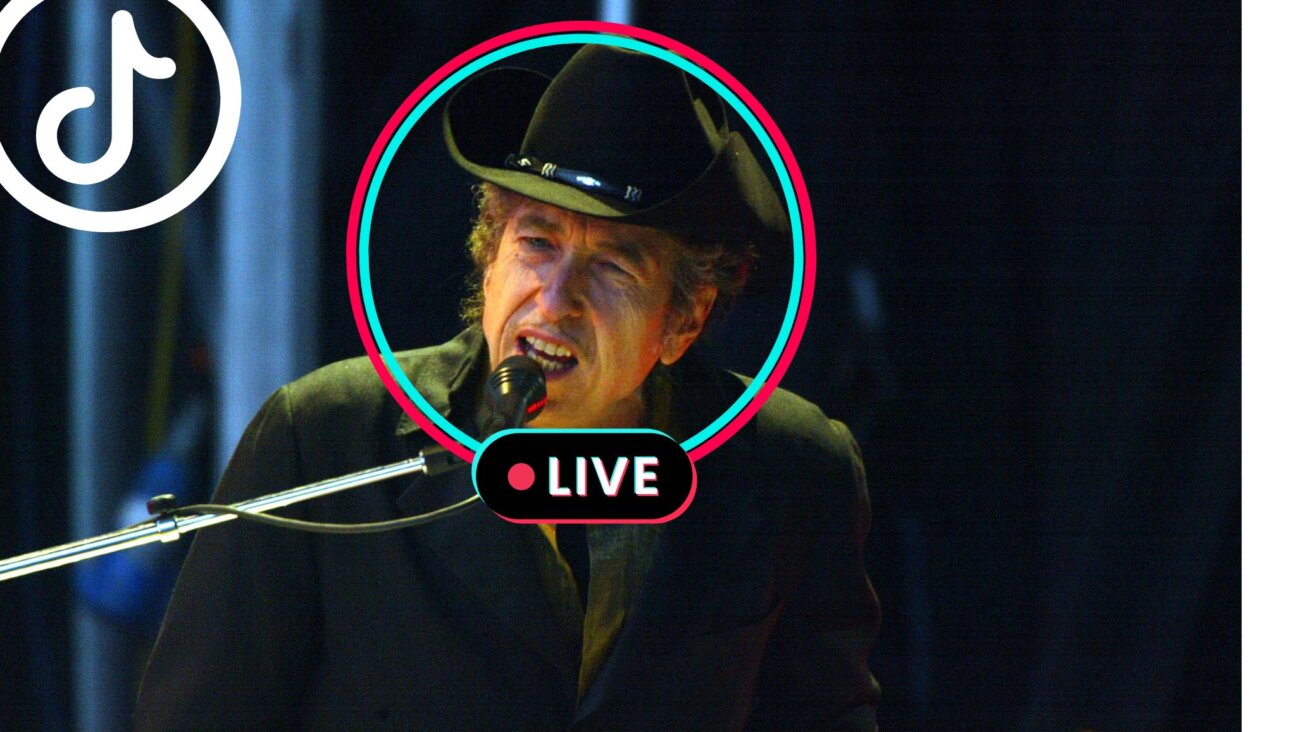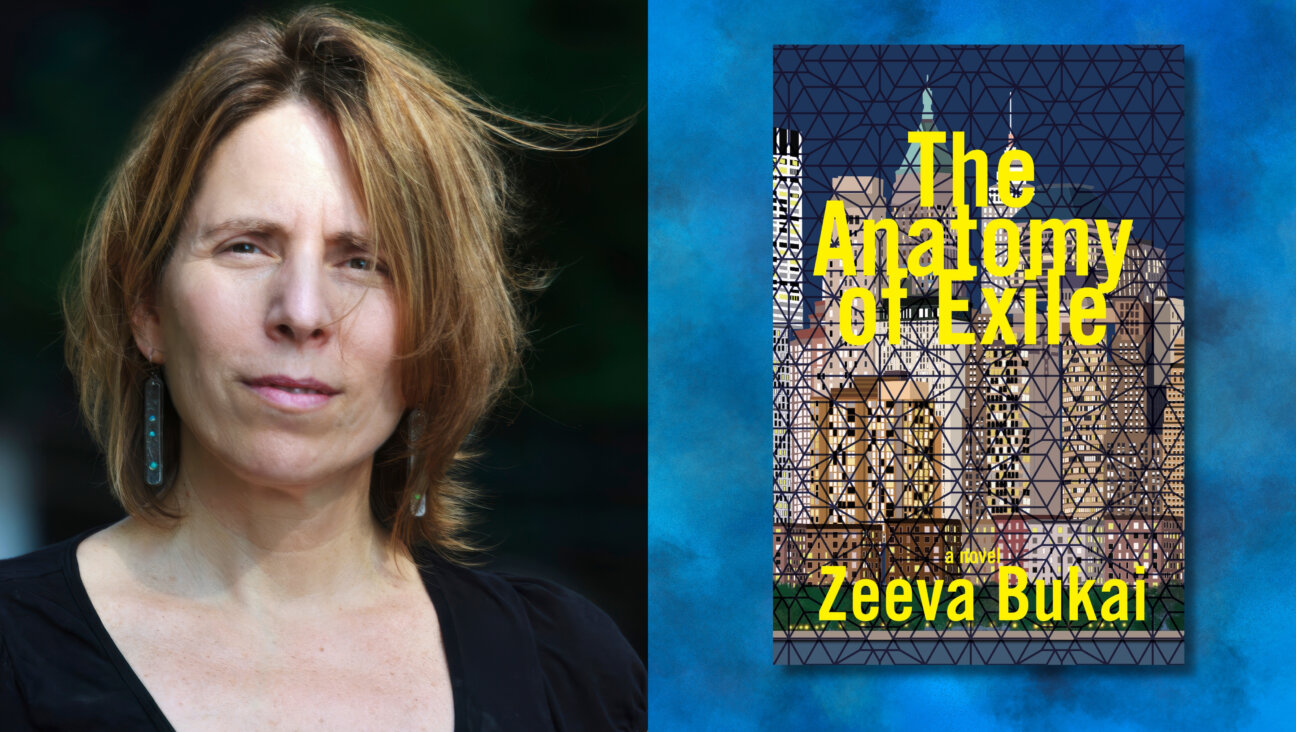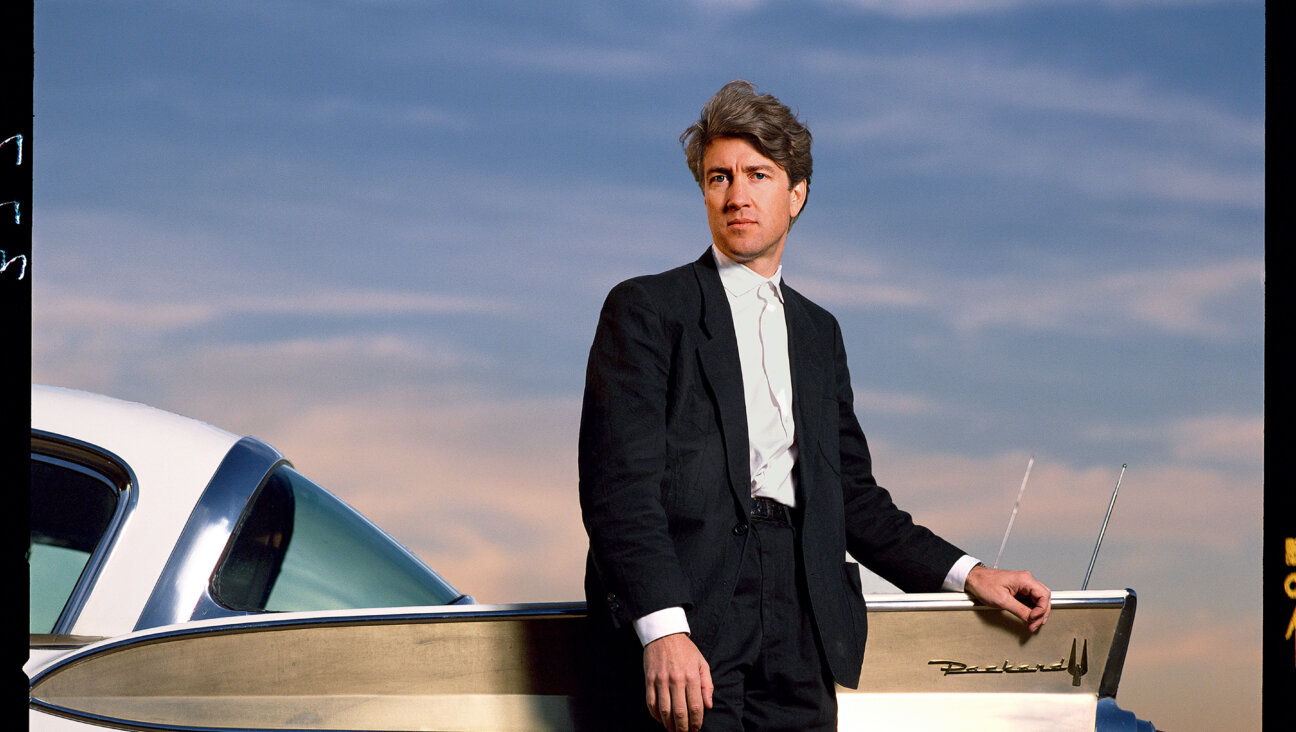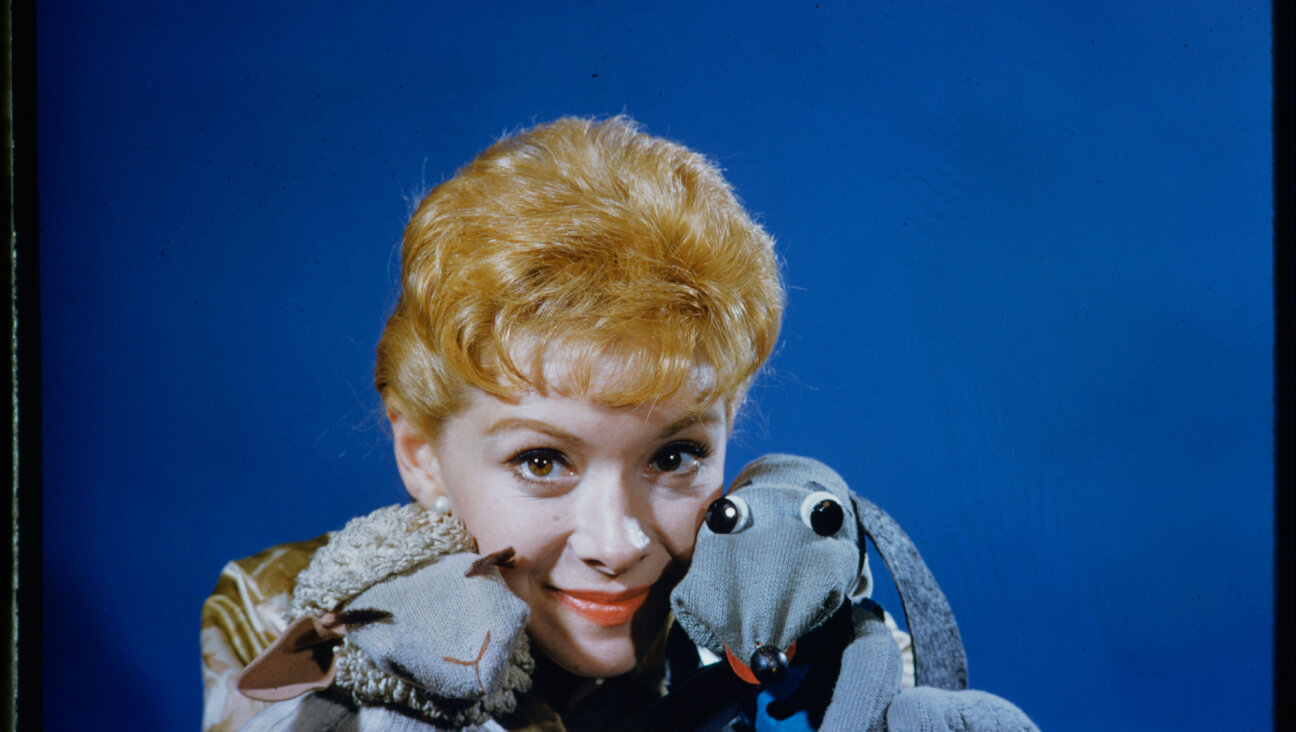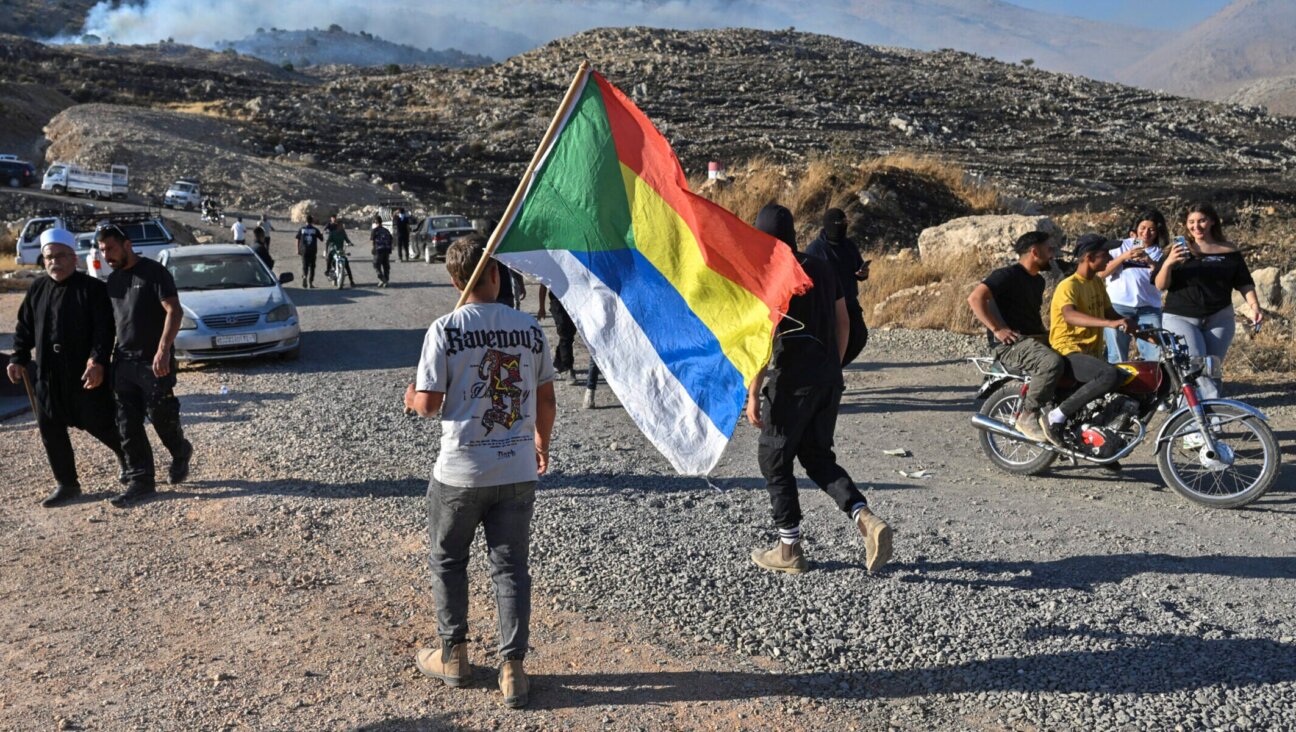50 years a feminist, and I’m still learning what suffrage means

A group of young female suffragists seated on a float decorated to resemble a boat, the mainsail reads “Votes for Women, ” and the marquee reads “We Are Rudderless – We Need The Ballot”, 1900. Image by Ken Florey Suffrage Collection/Gado/Getty Images
I cast my first vote in 1945, when I was five.
My mother led me behind the curtain, picked me up so I could reach the levers, pointed to the name William O’Dwyer on the voting machine, and let me do the honors. But first, she told me why “we” wanted O’Dwyer to be the Mayor of New York: because he was a Democrat (like everyone we knew, except for a few scattered Marxists); an immigrant (like Mom, though he was, Irish-Catholic, while she was a shtetl Jew from Hungary); and a lawyer who had represented Jews caught smuggling weapons to the Haganah. (Any friend of the Zionist cause was a friend of ours.)

Letty Cottin Pogrebin. Image by Mike Lovett
My mother came here at age eight, 11 years before American women won the vote. Once naturalized, she never missed an election. She was a leftie and an unapologetic patriot who believed the first Tuesday in November was as sacred as Yom Kippur. Nothing could stop her from voting — or serving on a jury, even though married women were routinely excused.
The hoopla around the centennial of the women’s vote has got me thinking a lot about Mom, and how desperately she aspired to be a “real American.” Which, if you parsed it, meant conquering her Yiddish accent, subscribing to The Ladies Home Journal, memorizing the lyrics to the national anthem and displaying red, white, and blue bunting on July 4th while my dad, the Queens County Commander of the Jewish War Veterans, dressed in his uniform, hoisted the stars and stripes up the tall flag pole on our tiny front lawn in Jamaica, Queens, and saluted. Above all, a “real American” participated in the democratic process. Voting, to Mom, was payback to the country that had welcomed her family of impoverished refugees escaping the Cossacks. Voting was her thank-you note to the “Goldene Medina” that let her in and didn’t hate her for being Jewish.
Until I was about 10, and too big to be passed off as a child who couldn’t be left alone outside, Mom used to hustle me into the voting booth, not just to witness but to learn. She always went over which candidates “we” were supporting and why. I found the whole ritual thrilling and flattering, since none of my friends’ parents saw fit to include their kids in their civic exercise. It made me feel deliciously transgressive and preternaturally grown-up, as if I been given permission at five-years-old to smoke a cigarette, at six to drive without a learners’ permit, and at 10 to drink a shot of Scotch in a restaurant, not just a sip of Manischewitz on Shabbos at home.
“You always remember your first time.” People say that about sex, but it’s also true about my election debut. The first time I entered the voting booth alone was in 1960. Happily, I’d turned 21 in time for the Democratic Presidential primary — the legal voting age wasn’t lowered to 18 until 1971 — and just as I did when I was five, I voted for an Irish-Catholic: John F. Kennedy. Mom might have picked Hubert Humphrey, a strong supporter of Israel and Jewish causes, but I can’t be sure; she’d died of cancer when I was 15.
Since coming of age, I have voted in primaries, midterms and referenda. I vote in heavy rain and preseason snow. Yet, until feminism found me, I never considered — let alone credited — the women who fought to make my vote possible. I barely knew those women existed. Not my fault, of course, given how history was taught. Although the battle for the ballot was as divisive and dramatic as any military or political conflict in U.S. history — and it was recent enough for some of our teachers to remember the details — in our public school, it wasn’t deemed important enough to merit study. The suffrage war was squeezed between units on the Spanish-American War and World War I, and presented without depth, nuance or fireworks.
Our 6th-grade teacher said women were “given” the vote, as if it were a fancy trinket bestowed on the “weaker sex” by beneficent men out of the goodness of their hearts. Our textbook wasn’t much better. It gave the impression that passage of the 19th Amendment required little more than a strike of the Congressional gavel, or a stroke of Woodrow Wilson’s pen. The few suffragists introduced in the text’s sparse narrative invariably were called “suffragettes” — still are, to this day. And it included a photograph of Susan B. Anthony and Elizabeth Cady Stanton: one, a spinster in rimless spectacles, thin-lipped, lantern-jawed, hair pulled back in a severe bun; the other a prim, plump, stern-faced matron, her white curls topped improbably by a black lace mantilla that could have been pulled from a tango dancer’s trunk.
That picture stayed with me for years. I remembered the two white women because they looked mean and homely, and since they’d come to embody the entire suffrage movement, I merged their dour looks with their project. The Susan and Elizabeth my girlfriends and I aspired to be were not Anthony and Stanton, “suffragettes,” but Hayward and Taylor, movie stars.
I often wonder how I would have felt if I’d been made aware of a wider variety of women’s rights crusaders. As it was, I was left unacquainted with giants like Lucy Stone, Lucretia Mott, Anna Howard Shaw and Alice Paul, without whom there would have been no 19th Amendment. And it never crossed my mind that there were Black suffragists, like Hattie Purvis, Frances Ellen Watkins Harper and Ida B. Wells. If those women weren’t entirely absent from my world view, they were missing a backstory. Not a word was written about their families, illnesses, strategy sessions, the insults they had to tolerate from men, the physical threats and injuries, the courage it took to burst out of the corset of feminine passivity and protest their soft confinement. As some smart woman once said, “A pedestal, after all, is a very small space.”
Instead, the women’s lives were opaque, their intrepid bravery eclipsed by the groundswell of masculine hagiography and populist tropes, the muscularity of the labor movement, the violence of two World Wars. My generation roused ourselves politically in the ’60s, when the civil rights, anti-war and women’s movements once again sent millions marching, me among them. But even then, few of us realized that decades before our long-haired, tank-topped feminist cohort was out in the streets protesting sex-segregated Want ads and male chauvinism and demanding equal pay and legalized abortion, an army of suffragists in feathered hats, long skirts and shirtwaist blouses had risked their health, feminine respectability, marriages and sometimes lives for the franchise that men simply claimed as their birthright. In plain words, we took the vote for granted because we weren’t taught about the women who won it for us.
Until 1971, when I became a founding editor of Ms. magazine, I knew diddly-squat about the suffrage struggle. I had no idea that their movement started in 1848 in Seneca Falls, N.Y., at the first-ever women’s rights convention, and took 70 years to achieve its goal. I had never seen pictures of activist women my generation could identity with — women who marched, debated, spoke up, yelled, sloganeered, chained themselves to the White House fence, were spat on, stoned, harangued, ridiculed, mauled, assaulted, arrested, hauled into court, thrown in jail. All this, for the “crime” of demanding the vote. My 6th grade teacher never clued us in on the suffragists who went on hunger strikes and were force-fed raw eggs and milk through tubes shoved up their noses or down their throats, either to torture them or keep them from starving to death and becoming martyrs to the cause.
50 years a feminist, and I’m still discovering new characters, and the part they played in the historical drama that we commemorate this August. The other day, I happened on the website SuffragistMemorial.org, where I read about two Jewish suffragists who ought to be included in the Feminist Haggadah at every women’s seder, and the curriculum in every Hebrew school. First: Anna Pollitzer, granddaughter of a rabbi from Prague, artist, friend of Georgia O’Keefe, suffrage orator and organizer, “had a personal hand in the lobbying effort that helped secure the ratification of the 19th Amendment,” notes her biography on the site. “In August 1920, the night before a special session of the Tennessee legislature voted on the amendment, she dined with legislator Harry T. Burn. The next day, Burn cast the critical vote making Tennessee the 36th and decisive state to ratify the amendment.” I wish I knew if she pitched him over cocktails or coffee.
The second woman who caught my eye this summer, Maud Nathan, was a social worker, a member of the Daughters of the American Revolution, philanthropist and indefatigable activist for suffrage. Born in 1862 to a distinguished Sephardic family and descended from Gershom Mendes Seixas, the Revolutionary-era rabbi of New York’s Spanish and Portuguese Synagogue, Nathan sported quite a pedigree. She was cousins with the Supreme Court Justice Benjamin Cardozo and poet Emma Lazarus, both of whom favored women’s suffrage. Her sister, Anna Nathan Meyers, the founder of Barnard College, opposed it, as did their two brothers. The family was splintered by its differences, but Nathan remained undeterred in her passionate advocacy. In 1913, she won the New York Herald Prize for best letter in favor of woman suffrage. She saw the amendment ratified in 1920, and lived another 26 years to enjoy its benefits.
Besides trawling for lost feminist foremothers —the most neglected of whom, by far, are women of color — I’ve also been marking the centennial by watching the new documentary series, “The Vote,” currently streaming on PBS, and by studying period cartoons related to suffrage. The TV series is admirably forthright in exposing racist acts and opinions expressed by some white suffrage leaders, behavior often unacknowledged by doctrinarians who want their heroes unsullied by compromise, political expediency or self-interest. The first episode grapples with the painful reality that middle and upper-class white women, who were finely attuned to the evils of second-class citizenship, blithely violated the dignity of their African-American sisters when it came to the question of who would march in the front ranks of the 1913 Washington, D.C. suffrage parade. Though heroes in other contexts, prominent white suffragists sent prominent black suffragists, including Ida B. Wells, to the rear of the procession in order to avoid roiling the racist sensibilities of white Southern men, whose support was essential to pass the amendment.
But what’s most snagged my interest has been the anti-suffrage cartoons, because I can’t believe that anyone, especially men, ever thought they were funny. Had I been a man of the era, I would have found the cartoonists’ caricatures of male helplessness humiliating. In the guise of ridiculing pro-suffrage wives, the cartoons unwittingly exposed the deep-seated insecurities of the average American husband — his tenuous grip on manhood; his terror of female power; his fear that the vote would entitle the little woman to disobey his patriarchal rule, making him do all the housework and childcare; or simply abandon hearth, home and him. There are endless drawings of women in pants leaving for work, and harried husbands in aprons overwhelmed by a sink full of dirty dishes, daunted by a basket of laundry, helpless before the rage of a squalling baby. Besides domestic chaos, the cartoons predict that women would displace men in government, law, church and school, thereby dangerously undermining man’s divinely-ordained prerogatives.
Those tropes are all too familiar. We saw similar backlash in the media during the 60s and 70s, notably in response to The Pill, which was thought to free women to sleep around, and the Women’s Liberation Movement, which issued a full-scale agenda — deemed “uppity” — demanding everything from marriage contracts to clitoral orgasms. And 50 years ago, on August 26, 1970, a television newsman opened his broadcast with a sarcastic riff on the Fifth Avenue women’s march that Betty Friedan and others had organized to celebrate that year’s 50th anniversary of suffrage. “A militant minority of women’s liberationists is on the street, men,” the anchor quipped through a wry smile. “So if you go to work tomorrow morning and your secretary refuses to do the filing, and you go home and your wife won’t do the cooking, don’t blame them. Remember, you gave them the vote 50 years ago!” The clip playing behind him shows 100,000 marchers — women, men, kids, old people — thronging Fifth Avenue from sidewalk to sidewalk. But the testosterone-challenged newsman saw a “militant minority.”
Parallels between the backlash against “women’s lib” in my time and the push-back against women’s suffrage during my mom’s are obvious. The early 20th-century cartoons depict suffragists as loud-mouthed harridans in bloomers or trousers, mothers turning their backs on their husbands and children. Commentators in the ‘60s and 70s called my generation of feminists “mannish,” “anti-family,” “ball-breakers” and “runaway wives.” Cartoons made us look like butch lesbians dressed in combat boots or overalls, with a thatch of hair under each arm. Today, I see a clear through-line from arguments used against the 19th amendment to rhetoric repurposed by opponents of the newly revivified Equal Rights Amendment today. The first group cautioned that giving women the vote would unsex them, threaten the natural order and sissify men. The second group warns us that enshrining gender equality in the Constitution will let men stop paying child support and put women in foxholes and force us to share a urinal with a guy. It’s the same argument, in different shmattas.
As I’ve watch my sister activists once again acting as supplicants of male voters and legislators who control the destiny of the ERA, I’m reminded of these lines from “We the Mothers,” by the Jewish suffragist, writer, and social reformer, Rose Pastor Stokes, known as the “Cinderella of the sweatshops.”
The windows of their Council Halls
We softly tap.
Our sons within.
Will they come forth and take us in?
We trust that they may take us in.
Else must we batter down the walls,
And force the doors,
And enter in!
For if they will not take us in
They shall not keep us out.
Here’s a suggestion inspired by the radical spirit of women like Rose Stokes and the mother who taught me to love democracy: If you have a little girl in your life who’s under the age of 10, tell her the story of suffrage, then take her with you behind the curtain, explain why it’s so urgent to vote for Biden-Harris, and let her mark your ballot. I promise she’ll never forget it.
Oh, and by the way, Mayor O’Dwyer won in a landslide.
Letty Cottin Pogrebin is an author and a founding editor of Ms. magazine. She is currently finishing her 12th book, “Shanda: A Memoir of Shame & Secrecy”





